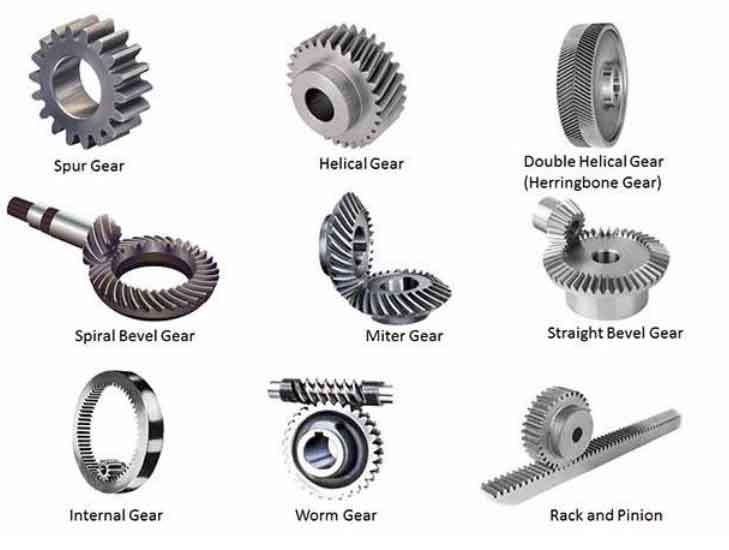Helical gears and spiral gears are both types of cylindrical gears used in various mechanical applications. While they share some similarities, there are distinct differences between them in terms of design, functionality, and applications. Let’s explore these gear types and provide a comparative analysis.

- Design:
- Helical Gears: Helical gears have angled teeth that are cut at an angle to the gear’s axis. The teeth form a helix shape around the gear, creating a diagonal pattern.
- Spiral Gears: Spiral gears, also known as crossed-helical gears or skew gears, have teeth that are cut at an angle similar to helical gears. However, spiral gears have a twist or spiral angle along with the helical angle. This creates a more pronounced helix shape with a spiral pattern.
- Contact and Load Distribution:
- Helical Gears: Due to the helical shape of the teeth, helical gears provide a gradual engagement between the teeth. This results in smoother and quieter operation compared to other gear types. Additionally, helical gears distribute the load over multiple teeth, reducing the stress on individual teeth.
- Spiral Gears: Spiral gears also offer smooth operation and load distribution due to their helical shape. However, the spiral angle in spiral gears introduces a thrust component that helps to balance axial forces, resulting in improved load-carrying capacity.
- Efficiency:
- Helical Gears: Helical gears generally have higher efficiency compared to spiral gears. However, they may have a slight decrease in efficiency due to axial thrust generated by the helical teeth, which causes additional friction.
- Spiral Gears: Spiral gears have a relatively lower efficiency compared to helical gears due to the additional thrust component generated by the spiral angle. This additional thrust causes more axial forces and increases friction, leading to a slight decrease in efficiency.
- Axial Thrust:
- Helical Gears: Helical gears generate an axial thrust force parallel to the gear’s axis due to the helix angle of the teeth. This thrust needs to be addressed using appropriate thrust bearings or gear arrangements.
- Spiral Gears: Spiral gears also generate axial thrust forces like helical gears, but the spiral angle helps to balance these forces to some extent. This results in reduced axial thrust compared to helical gears.
- Applications:
- Helical Gears: Helical gears are commonly used in various applications, including automotive transmissions, industrial machinery, power generation equipment, and gearboxes where smooth operation and high load-carrying capacity are required.
- Spiral Gears: Spiral gears find applications in specific situations where the axial thrust needs to be controlled, such as marine propulsion systems, differential gears, and certain gearboxes that handle high torque and heavy loads.
Helical gears and spiral gears have similar tooth geometries but differ in their additional spiral angle. Helical gears provide smoother operation and better load distribution, making them suitable for a wide range of applications. On the other hand, spiral gears offer improved axial thrust balancing but may have slightly lower efficiency. The choice between these gear types depends on the specific requirements and operating conditions of the application at hand.
